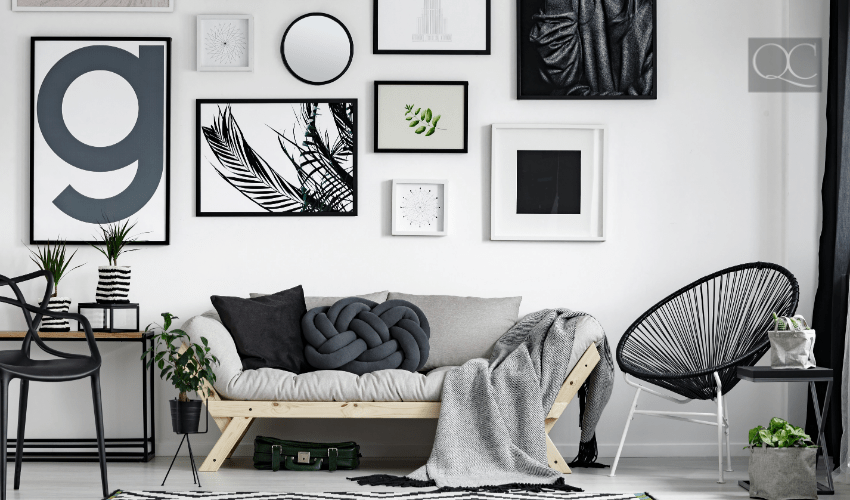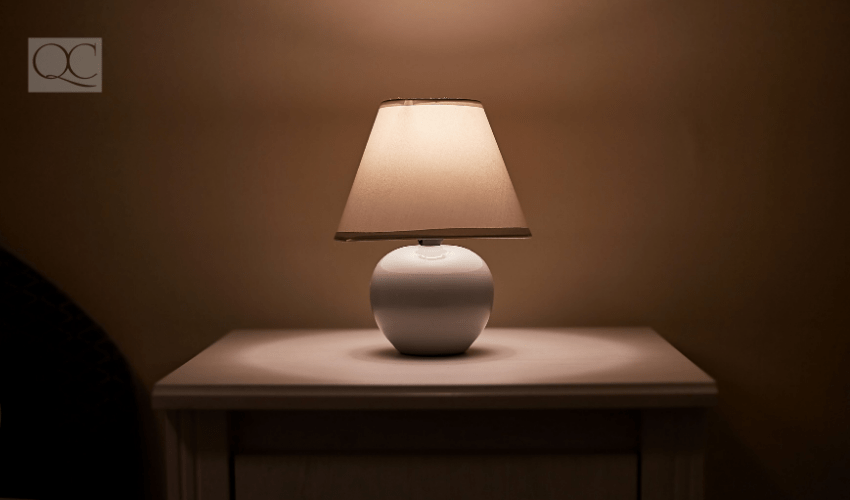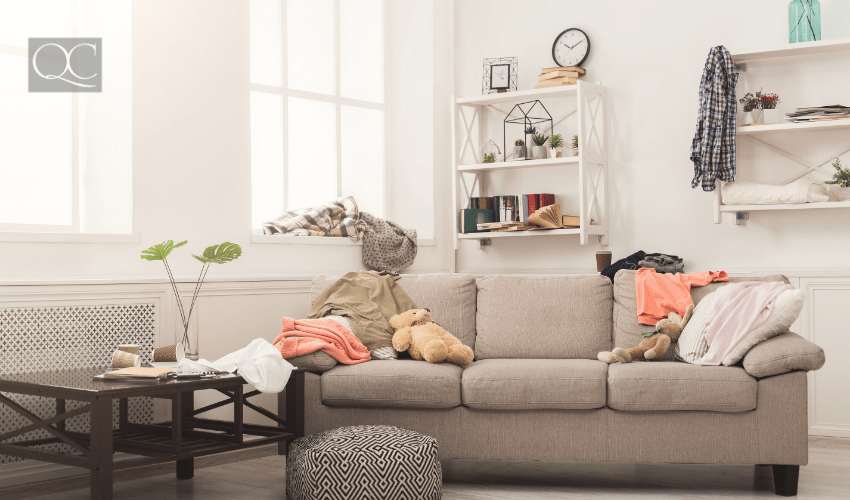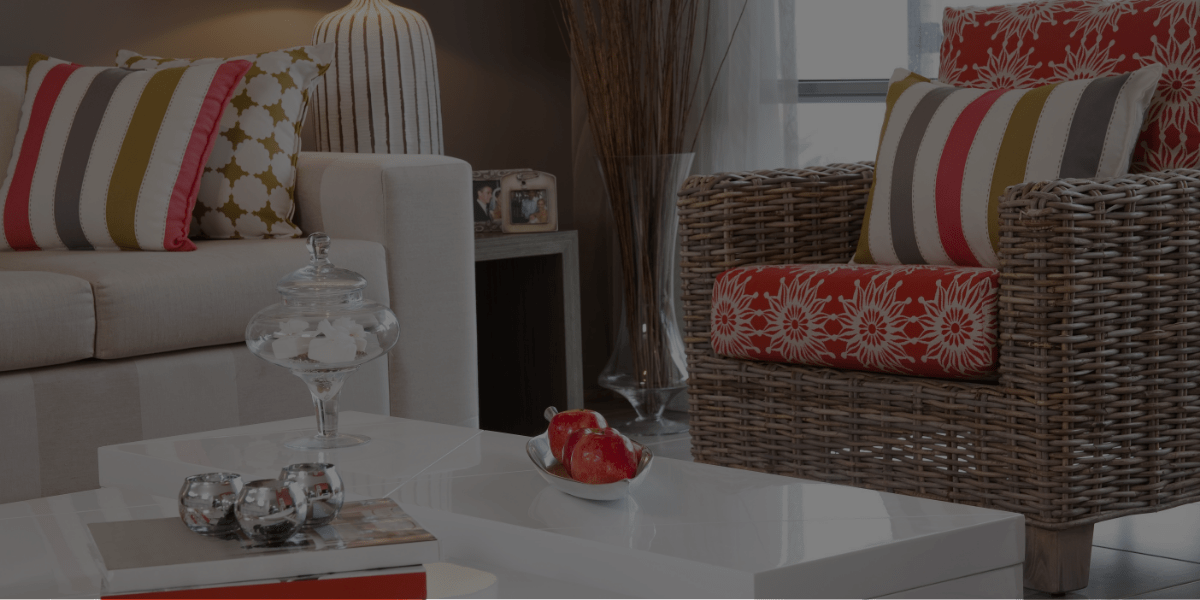Tammy Hart, I.D.D.P, CAPS is a certified interior decorating specialist. She’s also a Certified Aging in Place Specialist from the National Association of Home Builders. Tammy is also the owner and award-winning designer for the Designer Chick Co., as well as the Past Director on the National Board for DDA (formerly CDECA).

As an Interior Decorating Expert…
…there is SO much information for you to take in when you first step into a client’s space. Some of the things you need to consider include:
- Focal points;
- Architectural details;
- The size of the spaces you’re working in;
- Current styles or themes (or lack thereof);
- Lighting;
- Palette, etc.
Your job is to determine what mistakes your client has made. This way, you can help them fix those mistakes. Luckily, I’ve gathered a list of some of the most common mistakes I see clients – as well as my recommendations for correcting them!
6 Interior Decorating Mistakes I See Clients Make
Mistake #1: Lack of Focal Point
As your interior decorating training has taught you, a focal point creates an anchor in a room. It commands attention. Many clients are either not sure what the focal point in a room is, or they don’t know how to properly create one.

What You’ll See
The room will most likely be unbalanced and lack direction. Also, furniture might be misplaced and nonsensical.
How to Fix It
Begin by looking for natural architectural details in a room. A fireplace, half walls, large windows, moldings, columns, or the longest wall are all examples of elements that can serve as the focal point. If an architectural detail doesn’t exist, create the room’s focal point by using the largest piece of furniture or a large piece of artwork.
Mistake #2: Champagne Tastes on a Beer Budget
Generally speaking, professional designers have a love/hate relationship with interior decorating and design shows. On the one hand, we love them because they help to educate our clients.
But on the other hand, we also hate them because they create unrealistic budget expectations. Television shows won’t depict this side of reality, simply because it wouldn’t make for good TV. As a result, the client isn’t taught how much their projects will truly cost.

What You’ll See
Clients will have an unrealistic idea of what their project will cost. Because of this, they’ll be sticker shocked when presented with the TRUE costs of a project.
How to Fix It
As an interior decorating professional, it’s your responsibility to set realistic budget expectations for your clients. Develop a budget that includes ALL aspects of a project. This should include the costs for:
- Materials;
- Contractors;
- Furnishings;
- Fixtures;
- And the costs for the design (and your work) itself.
Mistake #3: The Room Lacks a Purpose
One innocent mistake I always see clients making is when they try to design a space – without defining the function or purpose of the room itself.

What You’ll See
There will typically be a distinct lack of defined purpose for the room. Bedrooms are a common example. Throughout my interior decorating career, I’ve seen countless people cram far too many functions into a bedroom.
For instance, there will be a bed. But then there will also be dressers, a vanity, a TV, chairs (which often turn into clothes hangers), workout equipment (which also turn into clothes hangers), a desk, a computer, etc.
As a result, the bedroom is suddenly tasked with being a sleeping/working out/working/resting/entertainment/reading/getting-ready room, too. Yikes! That’s far too much responsibility for one singular space!
How to Fix It
Help your client develop a solid goal statement for their space. This goal statement is their objective; what they want to achieve in the room. It will also be the driving force behind their project’s compass.
Mistake #4: Poor Lighting Plan
Most clients think that one lighting source is sufficient. But then they wind up struggling with poorly-lit spaces. In turn, this makes everyday tasks difficult.

What You’ll See
Clients will often use one source of lighting. It will normally be ambient lighting (i.e. one chandelier). They’ll neglect to add additional sources of lighting within a single space.
How to Fix It
Determine what lighting problems exist. Then, relying on your interior decorating training, make use of the 4 sources of lighting in order to correct these errors. As a reminder, the 4 sources of lighting are:
- Natural
- Ambient (Overhead)
- Task
- Accent
Varying brightness and temperature can also help to correct lighting issues.
Mistake #5: Mistaking Clutter for Interior Decor
A client’s lack of defined style will often cause them frustration when trying to decorate bookcases, shelves, and tables. This can sometimes lead them to use non-decor items instead. But as a result, things just wind up looking messy.

What You’ll See
You’ll see a mismatch of items jumbled together in a way that doesn’t make sense. School books might be paired with candlestick holders. 5-year-old magazines might be mixed with DVDs. Christmas decor might even be paired with Coastal decor – in the middle of July.
Obviously, you’ll see items paired together that don’t complement on another in terms of palette, theme, scale, or proportion.
How to Fix It
Start by determining your client’s interior decorating style preference. Then figure out whether their existing “decor” matches this style preference. Donate or sell decor items that don’t match the chosen style. This will help reduce the temptation to reuse them. Plus, it’ll help declutter the space.
Based on your client’s chosen preference, you can help them refresh their palette. Based on your interior decorating expertise and training, them to work within the Rule of Thirds, as well as the 60-30-10 Rule.
Food for Thought
Regardless of your client’s mistakes, they know they need help. This is why they’re turning to an interior decorating expert in the first place. So, remember to keep any subjective judgments at the door. It’s not your job to judge – it’s your job to help!
As an interior decorator, your duty is to make it right and build a beautiful space for them. It’s also to take the necessary moments to educate and empower them with decorating knowledge. This way, they too can go forward knowing how to create spaces that are personal, functional, and inviting!



